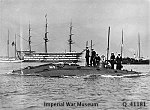Belle Tout Lighthouse
Bed and breakfastsBuildings and structures in EastbourneGrade II listed buildings in East SussexGrade II listed lighthousesLighthouses completed in 1828 ... and 5 more
Lighthouses completed in 1834Lighthouses in EnglandLighthouses of the English ChannelRelocated buildings and structuresUse British English from February 2017

The Belle Tout Lighthouse (also spelled Belle Toute) is a decommissioned lighthouse and British landmark located at Beachy Head, East Sussex close to the town of Eastbourne. It has been called "Britain's most famous inhabited lighthouse" because of its striking location and use in film and television. In 1999, the Grade II listed building was moved in one piece to prevent it from succumbing to coastal erosion.
Excerpt from the Wikipedia article Belle Tout Lighthouse (License: CC BY-SA 3.0, Authors, Images).Belle Tout Lighthouse
Beachy Head Road,
Geographical coordinates (GPS) Address Website Nearby Places Show on map
Geographical coordinates (GPS)
| Latitude | Longitude |
|---|---|
| N 50.738216 ° | E 0.214985 ° |
Address
Belle Tout Lighthouse
Beachy Head Road
BN20 0AE , East Dean and Friston
England, United Kingdom
Open on Google Maps









